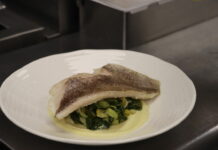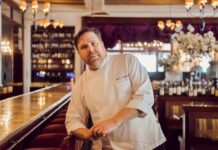 The Whiskey Rebellion—it’s one of those events in American history that everyone has heard of, but no one knows what it is. This is important, so pay attention. The American Revolution was a costly affair. So costly, in fact, that in 1791 the Continental Congress levied a hefty tax on whiskey production to help boost our young country’s finances. The Colonists were a nation of whiskey drinkers, and its creation centered in Western Pennsylvania where Scotch-Irish immigrants happily plied their distilling craft in copper pot stills. The grain of choice for spirit manufacturing was rye, which grew in great abundance throughout the Commonwealth’s rolling farmlands.
The Whiskey Rebellion—it’s one of those events in American history that everyone has heard of, but no one knows what it is. This is important, so pay attention. The American Revolution was a costly affair. So costly, in fact, that in 1791 the Continental Congress levied a hefty tax on whiskey production to help boost our young country’s finances. The Colonists were a nation of whiskey drinkers, and its creation centered in Western Pennsylvania where Scotch-Irish immigrants happily plied their distilling craft in copper pot stills. The grain of choice for spirit manufacturing was rye, which grew in great abundance throughout the Commonwealth’s rolling farmlands.
I happen to be from Western Pennsylvania, and know firsthand what a contrary group the citizenry can be. So it comes as no surprise that excise agents and tariff collectors were attacked at every opportunity. By the summer of 1794, the home burnings and mob violence had become so frequent that President George Washington dispatched an army of 13,000 men (the same amount needed to defeat the British 13 years earlier) to put down the rebellion.
In the end, after a few arrests and some trials, everyone was pardoned. The episode served to assert the federal government’s right to tax the individual states … an act it still performs now and then. But more important, the production of rye whiskey resumed, and began flowing unimpeded to what would become the throne of rye’s kingdom for the next 150 years: Baltimore, Md.
As the nation grew in size, so too did its thirst. Rye crops increased on Maryland’s farms and Baltimore’s newest industry, distillation, was born. Baltimore production surpassed rival Philadelphia, with local families leading the charge to quench America’s seemingly insatiable taste for the Free State’s rye whiskey.
And it was always a family affair. Beginning in 1860, Hunter Baltimore Rye was made by William Lanahan and Son. In 1868, the Frank L. Wight Distilling Co. began production of Sherbrook, using a recipe perfected by ancestor John J. Wight. From 1872 until 1919, Thomas G. Carroll and Son were kept busy turning out Baltimore Club Rye, Carroll’s Carrollton and Return Rye. Perhaps the most storied of the Maryland ryes was Melrose, created by Henry “Harry” Paul Goldsborough in 1885. Not simply one rye, it was a blend of no fewer than five whiskeys, and took up to six months in its Canton plant to produce one batch. On the subject of production, Mrs. Goldsborough bore 11 children, so handing the recipe from father to son through four generations was fairly simple.
The United States had turned into a hard-drinking country, and Maryland rye whiskey was indeed king. In fact it was the cornerstone of America’s oldest cocktail—the Sazerac, and one of our most enduring—the Manhattan.
So if Maryland rye was that good, what happened to it? Well, Prohibition for one thing. From 1920 until 1933, all production in the state ceased. Many of the distillers, like Carroll and Son, simply went out of business. Bootleggers provided what they could, but it certainly wasn’t the fine rye to which people had become accustomed. By the time Prohibition was repealed, the country’s tastes had changed. Drinkers craved not the peppery sensation of rye, but instead the sweeter, corn-based whiskeys reminiscent of those smuggled into the States from other countries.
Adding further to the demise, soldiers returned from World War II with an appreciation for scotch. Rye sales fell, and companies began to close. According to Roland Park’s William Goldsborough Helfrich, great-great-grandson of the Melrose founder, “With so many heirs, and no planned line of succession, the family just decided to sell the business.” It eventually ended up in the hands of Seagrams, which quickly ran it into the ground.
The sole rye survivor with any roots in Maryland is Pikesville Supreme. Its classic black, white and gold label is easily recognized in our finer liquor stores. Working from a recipe dating back to 1890, Andrew W. Merle began bottling in 1936. His son, Andrew Jr., distilled Pikesville Rye until 1972. Ten years later, bowing to high costs and low demand, the brand was sold to Heaven Hill Distilleries of Bardstown, Ky. Mercifully, they continued the tradition. But authentic Maryland rye was no more.
Gone was the Maryland rye, but not the Maryland rye drinker. I like to think of myself as one. Nothing else has that “bite” that rye whiskey has. That’s one thing about rye: When you’re drinking it, you know you’re drinking. It’s not light beer. Were there more people out there like me?
Thanks to some clever detective work by my good friends at The Wine Source and Reliable Churchill Liquor Distributors, I was hot on the trail of the region’s top purveyors of Pikesville Rye.
So that’s how I found myself sitting at the bar of a roadhouse on Route 1 in Laurel, Md. The place was called Nuzback’s Lounge, and had a big, stone fireplace, six dartboards, and a well-worn, checkerboard linoleum floor. The “well-worn” part was certainly authentic: At the same location for 55 years, the Nuzback family has been taming the thirst of Prince George’s County residents.
Behind the bar stood Amanda Masters and Kory Kilby, two of the most cheerful bartenders I have ever met. Neither seemed surprised when I told them that Nuzback’s sold more Pikesville Rye than any other bar in Maryland.
“Guys come in here every day and ask for it,” said Amanda. “They usually drink it on the rocks, or have shots with Budweiser.”
Kory eagerly nodded her head. “We sell lots of it.”
“How much?” I asked.
She hoisted an enormous half-gallon bottle of Pikesville Supreme onto the bar and let it drop with a thud. “Lots.”
Placing a close second behind Nuzback’s Lounge is the bar at the Elkridge Club, the most exclusive of exclusive golf clubs in Baltimore. I telephoned the club manager to arrange an interview, and was told I would be transferred to the bartender, Andy Ervin. The manager referred to him reverently as “Mister Andy.” When I told Mister Andy that I was doing a story about Pikesville Rye, he replied without hesitation. “Ah yes. A true Marylander drinks only rye.” I had never met the man, but already I liked him.
When I arrived early the next morning, the clubhouse was shimmering in the sunlight. As I climbed its stone steps, I suddenly wished I had dressed better. Mister Andy was waiting for me in the barroom. He was resplendently turned out in a green vest, black bow tie, and a crisp white shirt. Like the young ladies at Nuzback’s, he took the news concerning how much rye whiskey he was selling with an almost dismissive air.
“I sell a lot of Manhattans,” he said smiling, “But not like I sell the Frozen Ryes.”
I shook my head. Frozen Rye was a new one on me. He smiled again and took a bottle of Pikesville down from a shelf. “Start with a 12-ounce glass,” he said. Moments later, after a flurry of pouring and mixing, he placed before me a delicious-looking concoction of rye, crushed ice, three fruit juices, sugar, a little more rye, and a garnish of cherry and orange. Standing back to admire his work, he reached into his pocket and pulled out a cigar.
“How many of these can a man drink?” I finally asked.
“Well,” he said, striking a match, “Two. The third one I’m not responsible for.”
I looked at the glass. Frost had begun to form on the outside. Then I looked at my watch … 9:30 a.m. Then I looked back at the glass. Tough call.
That same Heaven Hill Distilleries that purchased Pikesville Supreme 22 years ago still turns it out today. According to Larry Kass of Heaven Hill’s marketing department, himself a rye drinker, “All the rye that we’re going to make in a year, we produce in one day.” Still, he’s encouraged by the number of small batch distilleries springing up in Kentucky and beyond. He also notes that Europe has suddenly taken a great interest in American rye whiskey.
Back home in Maryland, our best rye days are behind us. But perhaps we’re coming full circle, and better days are also ahead. Like the martini crazes that swept the nation only a few years ago, rye whiskey is poised for a great revival. Nuzback’s Lounge and the Elkridge Club are calling us to arms. Let the rebellion begin.




